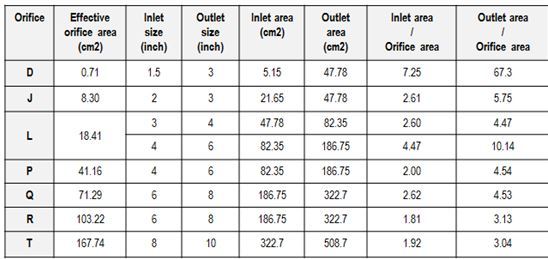I have a PSV that needs to be upsized from an E to an F orifice as the capacity needs to increase. The body is changing from a 1x1 to a 1.5x2. The orifice area is going from 0.212 in2 to 0.337 in2 as a result.
I'm hoping to avoid having to re-weld the inlet and outlet TOL's for the new PSVs and keep most of the existing piping.
The PSVs are located fairly close to the piping and I'll confirm we don't exceed dP limits on the inlet and outlet.
(sch 80)
1" pipe has an inside area of 0.7190 in2
1.5" pipe has an inside area of 1.767 in2
2" pipe has an inside area of 2.952 in2
Given that inside area of the 1" pipe is larger than the orifice size of the PSV, why can't I reduce down on the outlet of the PSV from a 2" outlet to the existing 1" pipe? This is brine water service so I'm not concerned with vaporization.
Thank you for your help!
-M
I'm hoping to avoid having to re-weld the inlet and outlet TOL's for the new PSVs and keep most of the existing piping.
The PSVs are located fairly close to the piping and I'll confirm we don't exceed dP limits on the inlet and outlet.
(sch 80)
1" pipe has an inside area of 0.7190 in2
1.5" pipe has an inside area of 1.767 in2
2" pipe has an inside area of 2.952 in2
Given that inside area of the 1" pipe is larger than the orifice size of the PSV, why can't I reduce down on the outlet of the PSV from a 2" outlet to the existing 1" pipe? This is brine water service so I'm not concerned with vaporization.
Thank you for your help!
-M

